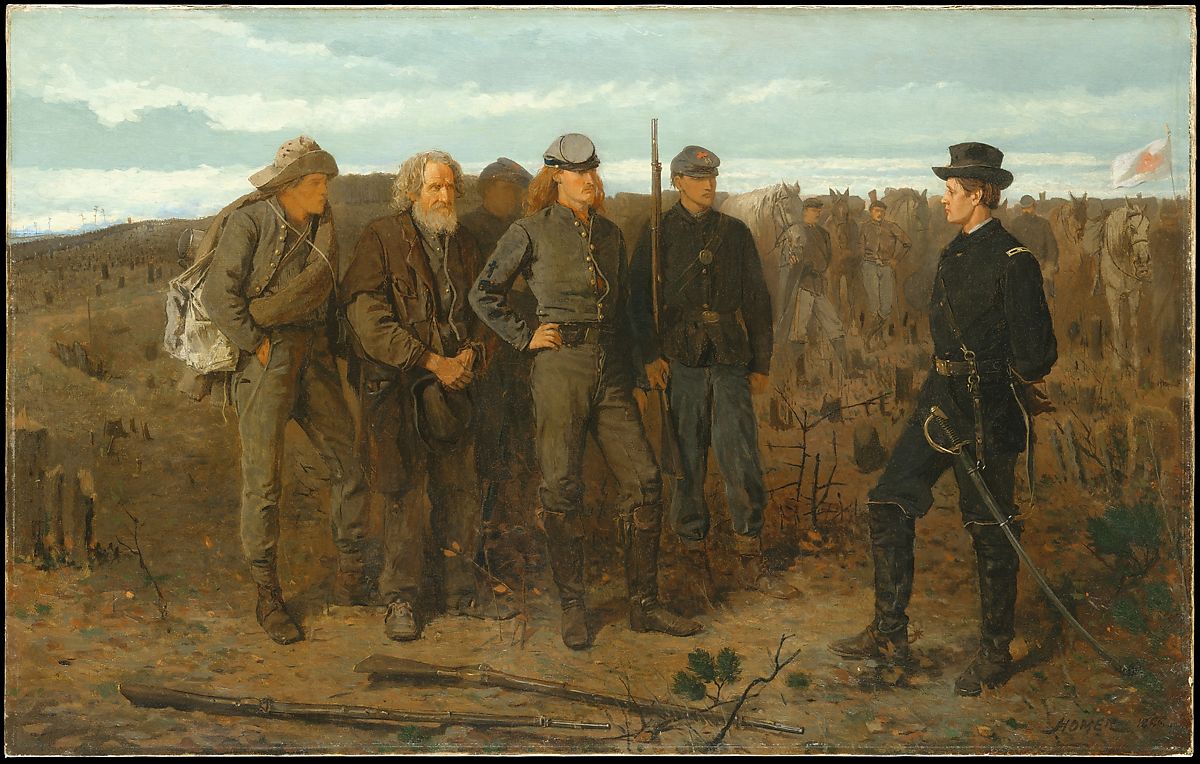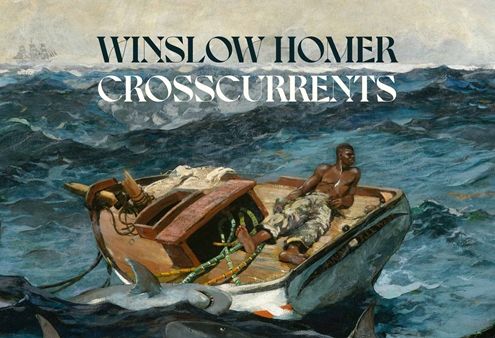Whitish blue skies, billowing waves, and the bobbing boat are one of the maritime sceneries in Winslow Homer’s paintings. Winslow Homer (1836-1910) was an American painter and printmaker, who was well-known for his maritime cultural landscape paintings.

Winslow Homer, The Gulf Stream/ 1899; reworked by 1906. The Metropolitan Museum of Art (the MET). https://www.metmuseum.org/art/collection/search/11122
The Gulf Stream (1899) is an icon of Winslow Homer: Crosscurrents exhibition at The Metropolitan Museum of Art (MET). This painting depicts a struggling Black seaman facing swelling waves in his small boat. Homer managed to paint the mighty Atlantic sea. Homer’s painting is often interpreted as an allusion to the struggle of Black people during the slavery and American imperialism. This work was inspired by Homer’s travels to the Bahamas and Cuba, where he saw the conflict between humankind and nature.
The exhibition offers Homer’s works that are situated in the Atlantic world. The installation is divided into two sections. The first section entitled “War and Reconstruction” will cover Homer’s works on the theme of conflict. During the American Civil War (1861-65), Homer worked in Harper’s Weekly. He illustrated the war including the emotional and physical impact on the soldier. Prisoners from the Front (1866) is one of his paintings created in this war period. This painting portrays the surrendered officer during the American Civil War. Homer’s style and tone in the war paintings were praised as ‘the most telling of all paintings about the Civil War’.

Winslow Homer, Prisoners from the Front/ 1866. The Metropolitan Museum of Art (the MET). https://www.metmuseum.org/art/collection/search/11133
The second section will display Homer’s watercolors of tropical landscapes. These watercolor works show their significance beyond the simple touristic souvenirs. Homer’s watercolor paintings can capture any kind of human relationship to the sea, from “complicated histories, geopolitics, imperial landscapes, to the threat of nature”.
Winslow Homer, A Garden in Nassau/ 1885. Terra Foundation for American Art, Daniel J. Terra Collection, 1994. http://collection.terraamericanart.org/
Homer’s A Garden in Nassau is one of them. It does not depict a garden, instead, a boy gazes at a white wall and closed gate. Behind the wall, a palm tree and red flowers popped out, giving the imagination of a beautiful garden. This painting suggests the exclusion of “descendants of enslaved Africans brought to the Bahamas”.
According to H. Barbara Weinberg, the late 1860s and the 1870s were Homer’s time of artistic experimentation. He lived in New York City and worked as a magazine illustrator. He found his subjects in the seaside resorts in Massachusetts and New Jersey, and in the Adirondacks, rural New York State, and the White Mountains of New Hampshire.
Homer was not only mastering oil paint but also watercolors. His success in watercolor paintings made him give up his work as a freelance illustrator in 1875. During the war, he had been in Virginia and returned there at least once during the mid-1870s, to observe and depict “the lives of former slaves during the first decade of Emancipation”. The main themes of Homer’s works are conflict, struggle, and survival.
In 1881, Homer traveled across the Atlantic to England. He resided in England for 19 months, particularly in the North Sea fishing community of Cullercoats. Besides seascapes, Homer also painted the human relationship to the sea. Homer was inspired by the courageous lives of Cullercoats’s inhabitants, especially women who hauled and cleaned fish, mend nets, and waited for their men to return from the sea. When back in New York, Homer’s art was significantly changed, especially the depictions of harrowing scenes at sea.
Winslow Homer: Crosscurrents is on view at The MET, from April 11 to July 31, 2022.

